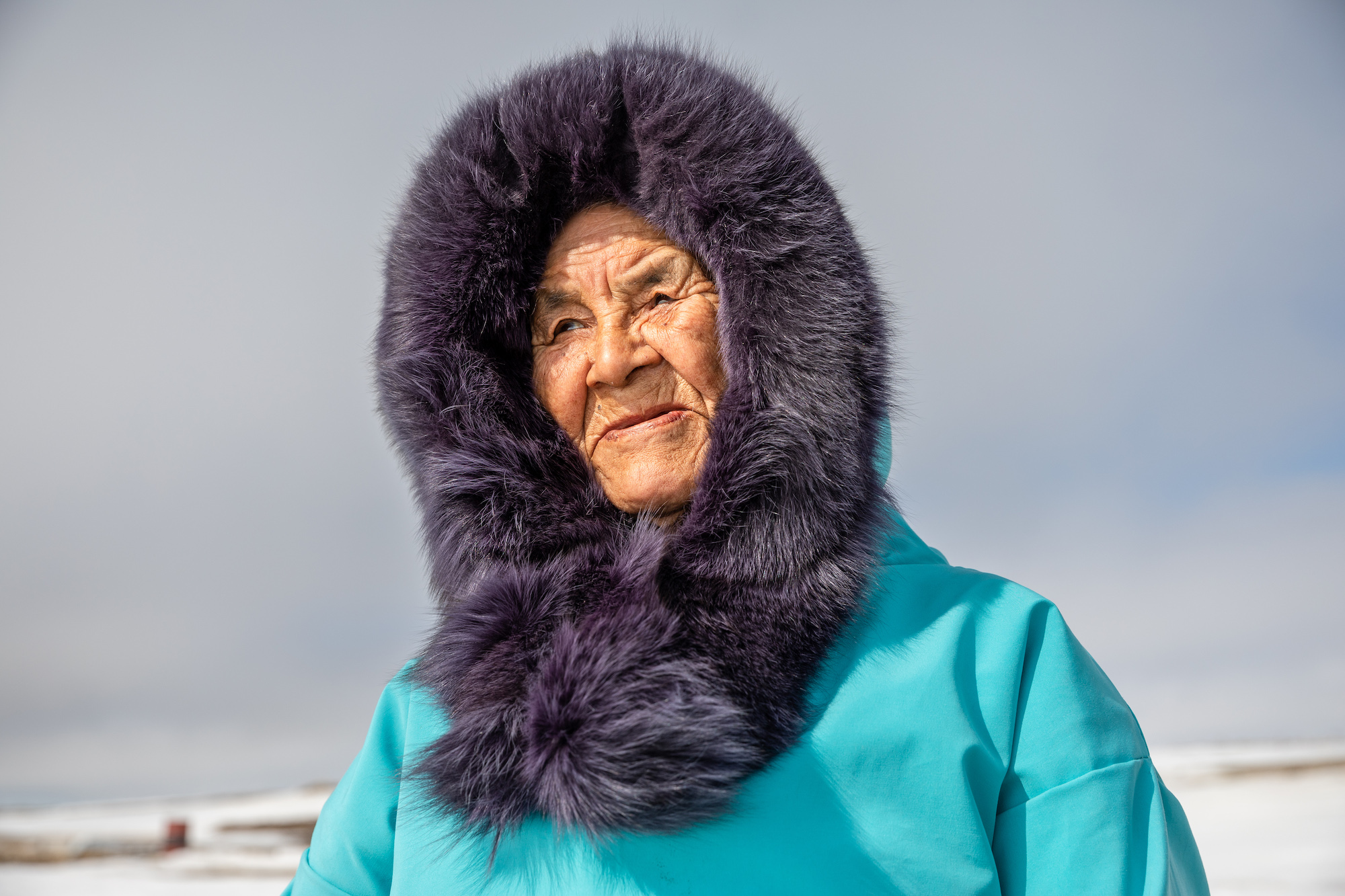[vc_row][vc_column width=”1/2″][vc_column_text]
Upholding tradition and sustainability, Canada Goose is giving back to our nation’s Indigenous communities.
Earlier this year, hundreds of Cambridge Bay (a small town in Nunavut with a population of approximately 1,700) residents filled the front foyer of Kiilinik High School. They’d been waiting for this ever since word spread that Canada Goose was coming to town. On tables in front of them sat neatly piled sheets of fabric of all colours, courtesy of the popular Canadian outerwear brand.
The initiative was part of Canada Goose’s Resource Centre Program. Quietly established in 2009 with a mission to honour Canada’s North, the program delivers fabric donations and materials to remote communities in the Arctic through a partnership with First Air, the country’s northern airline. It’s a way to give back by flying over quality fabric that Canada Goose has used in past jackets and doesn’t use or need anymore. [/vc_column_text][/vc_column][vc_column width=”1/2″][vc_single_image image=”15771″ img_size=”full”][/vc_column][/vc_row][vc_row][vc_column][vc_column_text]In these communities, traditions hold strong; females often become skilled sewers at a young age and create warm parkas for the entire family. The Canada Goose Resource Centre Program enables them to continue their traditional ways of sewing, but with modern technical materials—ones that can withstand the harsh Arctic elements—that they might never have access to or would find too expensive.
Since its inception, the company has donated more than two million metres of fabric to communities in Northern Canada. “The typical delivery includes usually at least eight palettes—enough to fill two ATR plane loads,” said Shelly De Caria, Senior Manager, Community Relations, First Air. [/vc_column_text][vc_media_grid element_width=”6″ grid_id=”vc_gid:1578436759387-b78f38b6-91dd-1″ include=”15768,15769,15770,15765″][vc_column_text]The inspiration behind the program came back in 2007, when the company invited Meeka Atagootak and Rebecca Kiliktee, two sewers from Pond Inlet, Nunavut, to its Toronto factory. The occasion was to create a commemorative parka using their traditional sewing techniques. When the pair noticed scraps of excess fabric left over, they asked if they could bring them home with them to make jackets for their loved ones and members of their community. From there, an idea was born. In addition to fabrics, Canada Goose also donates buttons, cuffs, zippers, and lining.
At the Cambridge Bay event, each resident was allowed one pre-cut, four-metre piece of fabric. To call them appreciative is an understatement. “I’ve had my Canada Goose bomber since ’91 and it’s in great condition!,” said Jerry Puglik in the middle of all the action. He scooped up some fresh fabric so that his wife can make him a new cover for his parka. “She’s a good seamstress,” he beamed. “A very talented seamstress.”
Annie Neglik said she enjoys sewing — a skill passed down from her mother —especially duffle socks and mittens. “This is for a parka for my great nephew; he’s in grade 10 now,” she said of her new fabric find. “I usually get coats at second-hand stores in Yellowknife or elsewhere, and take the material out to make new ones. This makes it easier.”
Sewing is a way of life here in Nunavut. It’s a piece of culture that has allowed people to survive in harsh conditions through the generations. By minimizing waste and bolstering community ties, Canada Goose continues to empower Indigenous people and serves as a role model for other companies to follow. [/vc_column_text][/vc_column][/vc_row]












